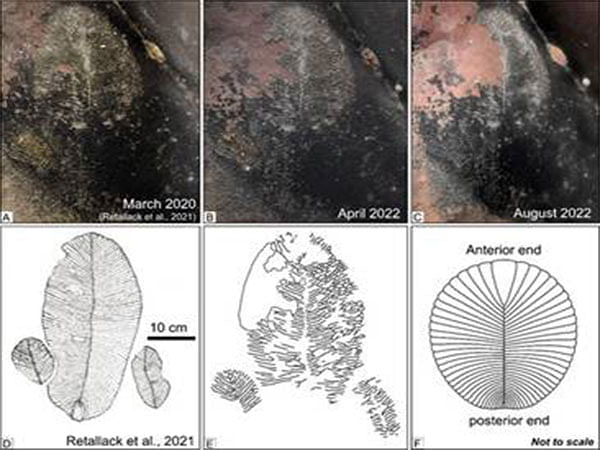New Delhi [India], June 16 (ANI): Indian scientists have proven that the Indian Dickinsonia fossil discovered in the UNESCO World Heritage Site Bhimbetka Cave Shelter in 2021 was actually a left-over impression of a fallen beehive, not a true fossil, Ministry of Science & Technology said in a statement.
The Vindhyan Supergroup is one of the world’s largest basins and the site of many fossil discoveries that explain how early life originated and diversified on Earth.
The discovery of an Ediacaran fossil in the area by a group of American scientists piqued the interest of a group of Ediacaran palaeontologists at BSIP.
The team from the Birbal Sahni Institute of Palaeosciences (BSIP), an autonomous institute of the Department of Science and Technology, travelled to the discovery site and examined the fossil Dickinsonia tenuis, an important Ediacaran fossil (the earliest animal) reported by the UNESCO World Heritage Site Bhimbetka Cave Shelter in 2021.
The biogenicity (chemical and/or morphological signature preserved over a range of spatial scales in rocks, minerals, ice, or dust particles that are uniquely produced by past or present organisms) of the purported fossil from the Maihar Sandstone of the Vindhyan basin was determined on the field.
Field observations, outcrop features, and detailed laboratory analyses (XRD, Raman Spectroscopy) published in the Journal of the Geological Society of India did not support the fossil’s biogenicity and syngeneic (formed at the same time as the enclosing rock) and it was inferred to be a left-over impression of a fallen beehive.
The study contradicts the interpretation provided by well-known American researchers.
The researchers discovered that, unlike fossils, which are always preserved on the bedding plane of the rock strata, the sample was not entirely preserved on the bedding plane of the rock strata.
Part of it was preserved on the bedding plane, while the rest was preserved on the transversally cut face of the Maihar Sandstone outcrop. On the same bedding plane, both fresh and decayed honey beehives were found.
A massive active beehive was also discovered with several Apis dorsata bees attached to it. The structure of a honeycomb was also observed. This evidence indicates that the described fossil was incorrectly identified as Dickinsonia.
Additionally, Laser Raman Spectroscopy and X-Ray Diffraction (XRD) confirmed the presence of honey and wax in the material due to bee activity in forming hives. (ANI)
This report is auto-generated from ANI news service. ThePrint holds no responsibility for its content.




